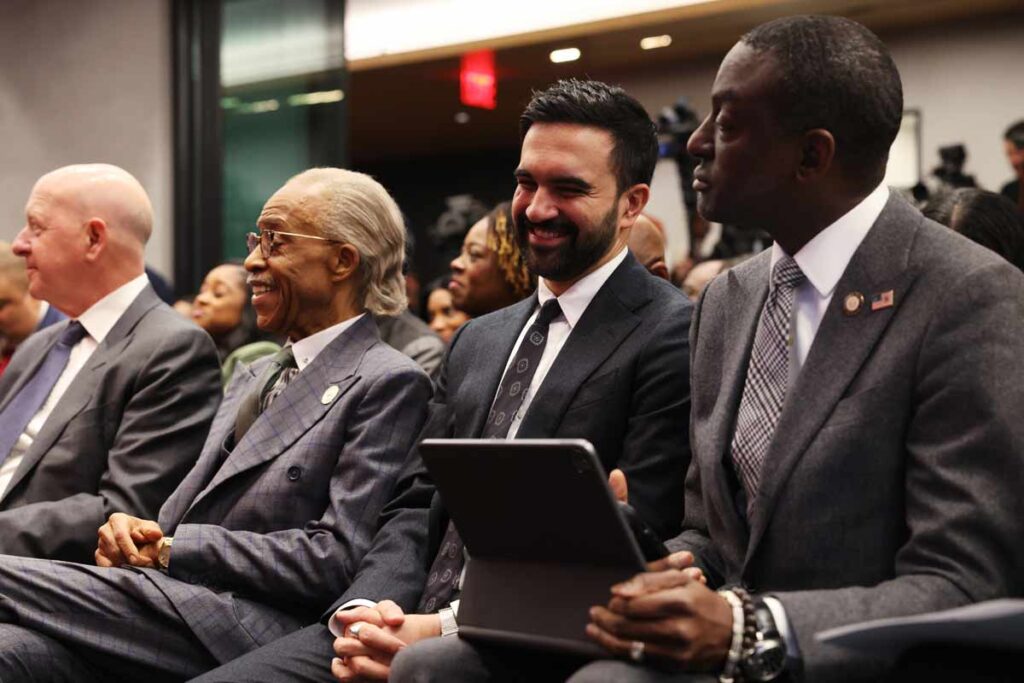By Mary Alice Miller
Between the Primary and General Elections, polling consistently predicted that Mamdani would win. But New York City’s money class and voters who support Israel no matter what its government does held on to hope that Cuomo would pull out a victory. In the end, polling undercounted Mamdani’s support in the General Election, just like the Primary.
But there was one political analyst who predicted that Mamdani could win by 50% in a three way race despite, or maybe because of, his Democratic Socialist affiliation. That analyst is Michael Lange, publisher the politics newsletter The Narrative Wars, who took a hyper-granular look at the election results.
Yes, Mamdani had a strong ground game with 100,000 volunteers who canvassed for him across the city. And yes, half of the New York City chapter of the Democratic Socialists of America 11,000 members joined within the past year.
But that was not enough to win the mayoral election. Voting blocks and issues matter.
Prior to the General Election, Lange wrote several pieces that outlined why he predicted Mamdani’s victory: “Predicting Every Block of the 2025 New York City Mayoral Election”, “How Zohran Can Reach 50%”, and “The End of Andrew Cuomo: The Politics of Pronunciation”.
The political class thought that the Black electorate would maintain its loyalty to Cuomo, but that electorate is loyal to the Democratic Party more. Cuomo just happened to be the Democratic nominee in previous elections.
“There were neighborhoods that Cuomo outpaced Mamdani in the primary by 20, 30, even 40 points that universally flipped to Mamdani, 10, 20-point wins.
Cuomo’s support, I guess you could say, maybe collapse is too strong because in some of these places, he still did get 30%, 35%, 40% of the vote, but it was a dramatic reversal,” said Lange in an interview on WNYC. “According to the CUNY Graduate Center [NYC 2025 Election Map at urbanresearchmaps,org], the census areas with predominantly Black eligible voters were won by Mamdani by 30 points. The New York Times conducted a somewhat similar analysis that had Mamdani winning Black majority election districts by 24%.”
Lange explained, “This is also across a class spectrum from lower-income neighborhoods like Brownsville to more working-class neighborhoods like Wakefield in the Northeast Bronx, to more middle-class neighborhoods like Canarsie, like Southeast Queens. This was a universal shift.”
Admittedly there were a couple of places where Cuomo still did hold on to eke out narrow majorities: Rochdale Village in Southeast Queens and Co-op City. Cuomo did win some of the senior center precincts, largely a consequence of age. “In the places where 65% of the electorate is over 60 years old, [Cuomo] would do really well,” Lange said.
According to Lange, “Mamdani, not only would he have not gotten 50%, were these inroads not made, he might not have won to begin with. I think that also for as well as he did, and all the improvement that he showed over the last couple months, if you think about the cost of living crisis and pushing people in the city to the brink, the center of that story is Black New York.
No demographic group has lost a greater percentage or larger numbers of their population in the last decade or two, a direct consequence, of rising costs, particularly around housing.
In addition, the Black electorate did not know Mamdani, and knew Cuomo, perhaps a little too much. But the Black electorate did not know John Liu until Al Vann introduced Liu to Black Bed Stuy at The Lab on Fulton Street. Liu went on to become the first Asian-American elected to citywide office in New York City.
Mamdani’s lifelong commitment to Palestine and the defense of it played a role in the election. Mamdani didn’t run on Israel-Gaza or the Israeli-Palestinian conflict, but his support for the human rights of Gaza Palestinians enraged anti-Mamdani voters and excited pro-Mamdani voters.
“I think Palestine started as a really important issue to mainly his base, but the escalation of the war really brought the issue into a broader consciousness,” said Lange. “AIPAC and the Israel lobby, they have such influence on our politics. Cuomo’s opposition force to Mamdani, it was very wealthy Manhattanites, it was middle-class Jewish neighborhoods, it was Orthodox and Hasidic enclaves, and it was the dwindling, but still powerful kind of white ethnic New York. You also mix in some Chinese American immigrants.”
There were voters who voted for Trump last and voted for Mamdani this year. Those voters were in Puerto Rican neighborhoods, South American neighborhoods in Queens, Muslims, and South Asians.
“I think Zohran Mamdani performed quite well in a lot of the immigrant neighborhoods that shifted dramatically towards Trump. Corona, Queens, there is no neighborhood in the entire country that has experienced such a shift right over the last decade. Mamdani did well there,” said Lange. “ I think both the pro-Mamdani and the anti-Mamdani coalitions were very motivated. It’s just one was larger and also growing, while the other was more declining in numbers.”
He added, “There was not quite a white working-class Mamdani/Trump voter. I’m sure there were, of course, a couple on Staten Island and things like that, but it was not an overwhelming development. Mamdani’s strength was for bringing a lot of these immigrant neighborhoods back into the Democratic Party tent.”
Mamdani’s the cost-of-living, economic-based message, resonated with young voters, the working and middle class, multiracial groups, and labor.
“I think Mamdani’s coalition, especially in this general election, was that new era of the David Dinkins rainbow coalition,” said Lange.
